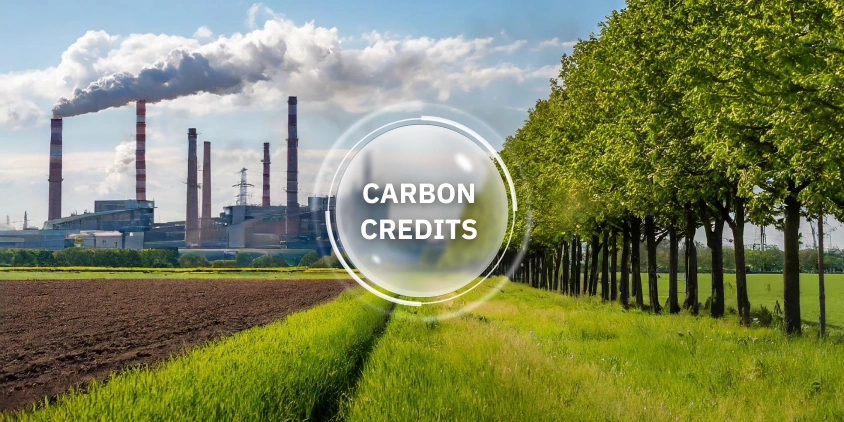
Carbon Credits: How They Work And Benefit The World
Over the past few decades, carbon credits have emerged as a powerful financial incentive for companies, NGOs, and governments seeking to reduce their climate footprint. In this article, we will overview the key foundations of today’s market landscape, from prominent regulatory initiatives like the Kyoto Protocol and the Glasgow Climate Pact to the validation and verification procedures for generating carbon credits. We will also lift the veil on what’s to come by looking at innovative solutions that will aid all the way in generating credits and trends that will shape the future of the carbon market.
What Is A Carbon Credit?
Carbon credit (СС) is an emission permit for a specified amount of carbon dioxide (CO2) or other greenhouse gases (GHGs). For every one credit, you can release into the atmosphere one metric ton (2204 pounds) of CO2 or an equivalent amount of another GHG. A company is eligible to receive credits if it cuts its emissions below a certain threshold. Companies commonly produce carbon removal credits through their efforts and investments that promote reforestation, energy conservation, and renewable energy. There’s also the option of buying CCs from companies that haven’t used them all.
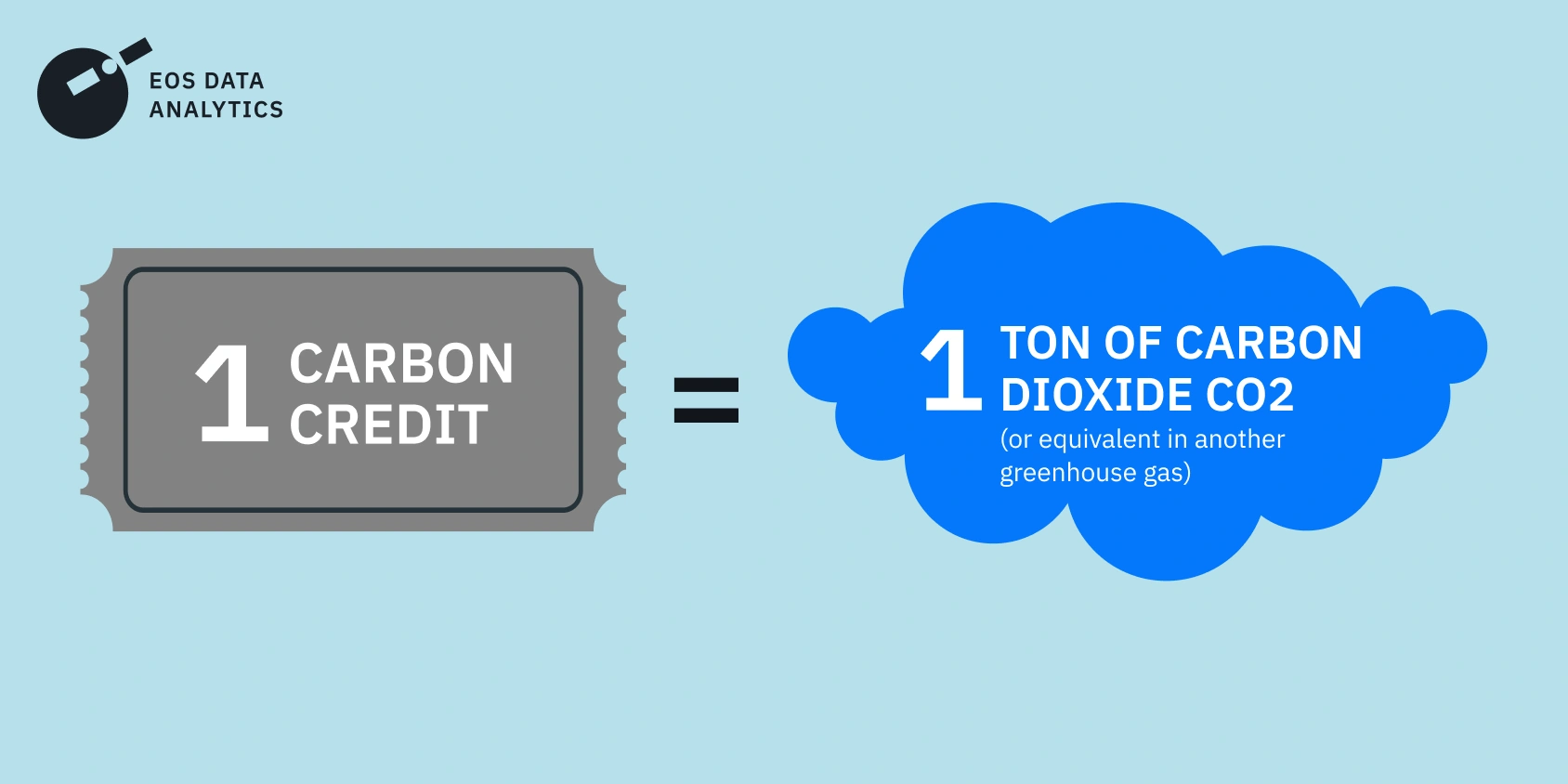
Purpose Of Carbon Credits
CCs are intended to serve as a financial incentive for companies to minimize their greenhouse gas emissions and engage in greener, more sustainable operations in agriculture and other industries. This market-based instrument helps us all fight climate change by supporting programs for reducing or eliminating GHG emissions.
Advantages And Disadvantages Of Carbon Credits
There are many advantages to carbon credits. One is that they encourage businesses to lower their emissions, both immediately and in the long run. This, in turn, can boost sustainability on a global scale by fostering investment in R&D for innovative emission reduction strategies. For companies that find it difficult to directly reduce their emissions, carbon credit trading gives them the option to buy credits from companies that reduce emissions more economically. In addition, CC development and trading can help bring industries and countries together to combat climate change.
When discussing problems associated with carbon credits, it is important to consider ethical concerns regarding the effectiveness of neutralizing emissions through credit purchases. Adapting to the credit market allows some companies, particularly the more lucrative ones, to continue emitting greenhouse gases. They don’t see the need to invest in greener practices when they can simply buy all the credits they need.
How Carbon Credits Work
Carbon credits are the mechanism that allows carbon revenue to be transferred from businesses to regulators (typically governments). In most cases, the yearly credit allocation is dictated by the country’s or state’s emission targets.
The cap-and-trade model is the most common approach to pricing CO2 emissions. Many countries, including the USA, Canada, Mexico, China, New Zealand, the UK, and the EU, have already adopted this model, and many more are contemplating its adoption. In cap-and-trade systems, a regulator establishes a cap (the highest authorized level of emissions), and companies trade emission permits according to carbon credit market demand.
It becomes increasingly challenging for companies to maintain their operations under the cap as it is steadily lowered over time. At the same time, a company may earn money by selling excess credits to other companies. So, businesses have a motive to cut down their environmental footprint. At the end of the day, businesses facilitating the reduction of CO2 emissions under a cap-and-trade system would have an easier time meeting emission targets.
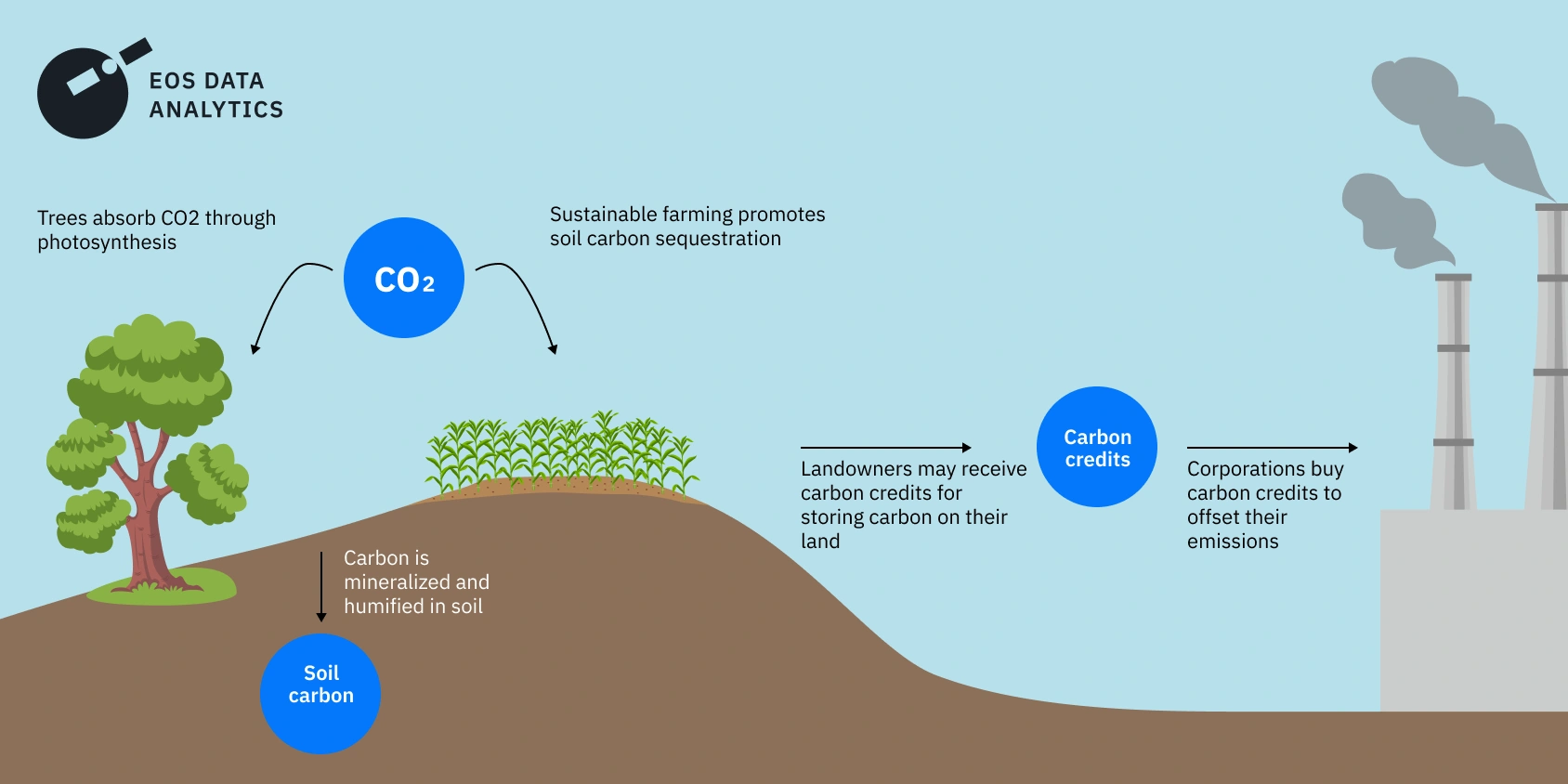
Initiatives To Regulate The Carbon Market
International agreements like the Kyoto Protocol, the Paris Agreement, and the Glasgow Climate Pact have established frameworks for countries to limit greenhouse gas emissions through CC trading systems. The United States was an early adopter of cap-and-trade systems, and since then, numerous state and regional carbon credit programs and efforts have arisen to encourage companies to lessen their impact on the environment. This section will give an overview of these major initiatives aimed at curbing climate change.
Kyoto Protocol
In 1997, the Kyoto Protocol was put into force as an international agreement to reduce emissions of greenhouse gases through the issuance of carbon credits. With the Kyoto Protocol, industrialized and developing countries pledged to cut their emissions in line with designated targets, putting the UN Framework Convention on Climate Change into action. As of now, the protocol counts 192 signatories .
Paris Agreement
In 2015, 196 parties signed the Paris Agreement, which establishes emission norms and encourages emissions trading. This agreement is an attempt by world leaders to cut down GHG emissions and restrict the increase in global temperature to less than 2°C (3.6°F) above pre-industrial era levels by the end of the 21st century .
Glasgow Climate Pact
The UN Climate Change Conference in Glasgow (COP26), held in November 2021, gathered an impressive number of over a hundred global leaders and 40 thousand participants. Negotiators have successfully reached an agreement called the Glasgow Climate Pact, the goal of which is to stimulate nations to fund projects that save forests and promote green energy infrastructure so that we all can fight global warming . This carbon credit agreement will enable signatory countries to make significant strides toward their emission targets by utilizing offset credits.
Carbon Credit Initiatives In The USA
There’s a long history of carbon credit trading in the US. The United States Clean Air Act, which enabled the government to control emissions into the air, went into force in 1990 and was the first cap-and-trade initiative in the world. Today, the Regional Greenhouse Gas Initiative (RGGI) is a program where ten states in the Northeast are working together to combat the emissions issue. In 2013, California launched its own program, which is among the biggest in the world. Some potential recipients of carbon credits in California are large-scale electric generating facilities, factories, and fuel distributors. The Inflation Reduction Act, the most current and probably landmark piece of legislation in the US aimed at lowering CO2 emissions, was enacted in August 2022 .
Types Of Carbon Credits
Carbon credits are available in two different forms:
- Certified emission reduction (CER). They are issued and overseen by institutional funds, mostly to offset the environmental impact of certain projects like power stations.
- Voluntary emission reduction (VER). These carbon credits are traded in voluntary markets free of third-party regulation.
The main distinction is that CERs have an official compliance status with the Kyoto Protocol, while VERs are not subject to regulatory caps and oversight.
Where To Buy Carbon Credits
There are two types of markets where credits can be purchased:
- Compliance markets are established and regulated by mandatory regional, governmental, or multi-governmental regimes. Typically, this market targets big, energy-hungry greenhouse gas emitters. One such market that allows businesses to purchase carbon credits from one another is the Emissions Trading System (ETS) in the European Union.
- Voluntary markets allow for voluntary credit trading, free from governmental regulations. Anyone — individual, business, or nonprofit — who wishes to lessen or do away with their greenhouse gas footprint is welcome to participate. Motivated by a desire to do their part for the environment or meet corporate sustainability targets, players in this market purchase credits to offset carbon dioxide emissions they cannot escape.
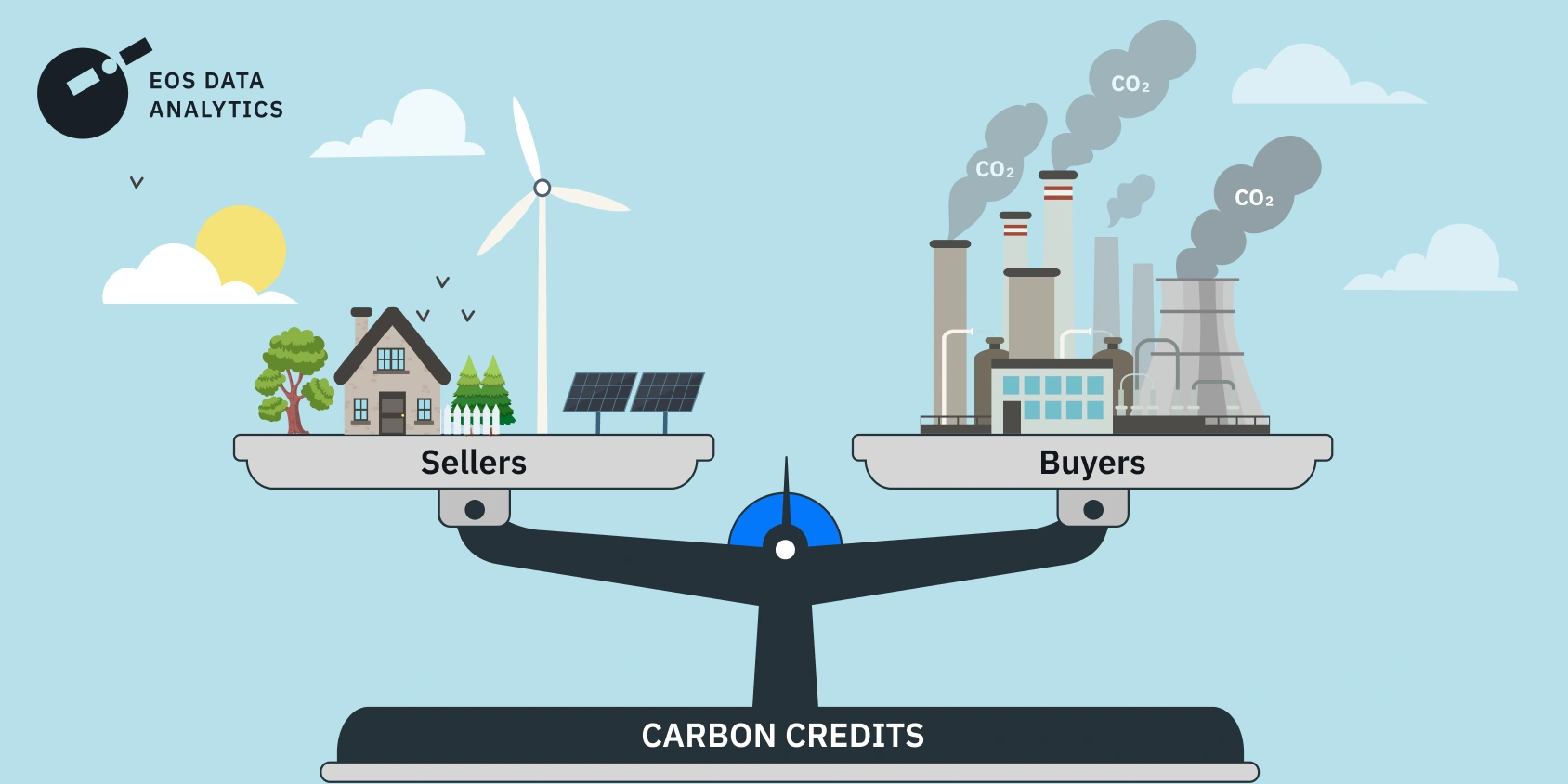
How To Produce Carbon Credits
Companies have the opportunity to generate credits by engaging in various emission reduction, capture, and storage activities, for instance:
- clean energy initiatives;
- energy management;
- carbon sequestration improvement;
- land stewardship;
- afforestation and reforestation.
Carbon Credit Calculation
For calculating carbon credits to be issued, compare greenhouse gas emissions from a project scenario (describing the situation the project is completed) to those from a reference, or baseline, scenario (describing the situation the project was not put in place). Carbon credits are issued for CO2 emissions avoided or removed thanks to the project, as calculated by subtracting project-scenario emissions from the baseline emission value.
Carbon Credit Verification Process
Although previously there were concerns about the thoroughness of this process, verification methods have made significant advancements. Thanks to the new rules ratified at the Climate Change Conference in Glasgow and implemented globally, verification has become significantly more accurate. Most often, the verification process encompasses the following steps.
Planning And Documentation
Project developers draw up comprehensive plans detailing the ways their venture would reduce their greenhouse gas footprint. This paperwork should provide the carbon credit project’s goals, location, and technologies.
Verification By An Independent Third Party
An independent auditor, accredited by the appropriate carbon credit standards bodies, such as Verra (Verified Carbon Standard), Winrock (American Carbon Registry), and the Gold Standard Foundation, thoroughly examines all project paperwork and performs field inspections.
Establishing A GHG Emission Baseline
The baseline is the amount of emissions that would be expected if the project were not implemented. For the purpose of measuring emission reductions, verifiers evaluate and set a reasonable baseline.
Monitoring And Measuring The Actual Decrease In Emissions
Verifiers examine carbon credit data collected through rigorous monitoring to make sure it’s accurate and dependable. Then they determine the project’s actual decrease in emissions using recognized methodology and consider additionality, which means they look at whether the project was necessary for the actual decrease in GHG emissions or if the reduction would have occurred anyway.
Providing Verification Report
All of the verifier’s findings and feedback are detailed in a comprehensive verification report. This report is forwarded to the relevant carbon credit body to prove your eligibility.
Registry And Issuance
Following approval, the reductions in GHG emissions are documented in a carbon registry system. Credits are issued according to these reductions and are ready for market trading.
Ongoing Screening and Verification
By periodically checking on active projects, accredited verifiers can ensure ongoing compliance and the lasting benefits of lower emissions.
EOSDA’s Technologies To Facilitate Carbon Credit Verification
We have seen that carbon credit validation is a complex procedure that requires thorough data collection and analysis of numerous factors. EOSDA, with its in-depth expertise in agriculture technologies, offers a range of solutions that can greatly facilitate these processes for carbon project developers.
Soil Organic Carbon Modeling
EOSDA’s Carbon solution is based on an innovative approach integrating SOC (soil organic carbon) models with satellite technology. Our advanced algorithms allow us to analyze soil testing data and accurately calculate the carbon storage in your soil. Thanks to an array of built-in predictors — up to 140 — the algorithms can adjust to different geographical and climatic situations.
To verify soil carbon credits, you need precise data on soil carbon sequestration in your fields; our SOC model can help you collect this data with maximum effectiveness. In the long run, the model will also assist in reducing costs for soil sampling. Additionally, our algorithms can anticipate how much carbon will be sequestered in the soil if certain sustainable practices are implemented and demonstrate the potential financial gain from them. Contact our sales team at sales@eosda.com to schedule an in-depth consultation regarding the features and capabilities of our Carbon solution.
In addition to these solutions, carbon project developers can take advantage of using the crop monitoring system, which leverages historical and current agricultural data to help monitor the implementation of sustainable agricultural practices on farmlands.
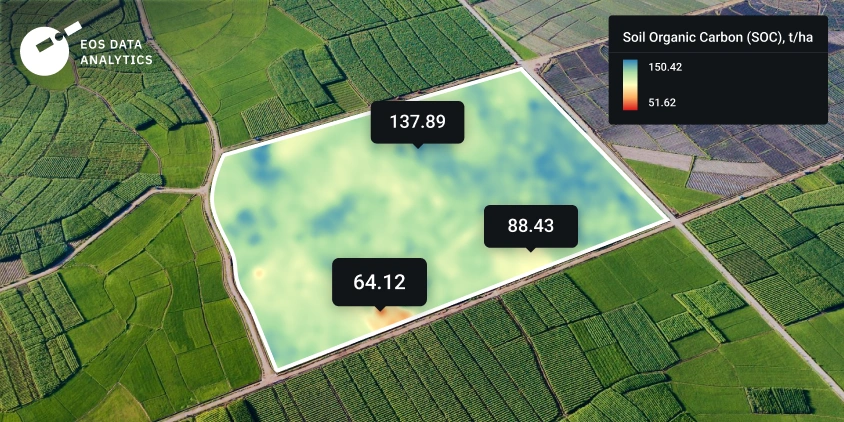
Variable Rate Application (VRA) Mapping
The use of mineral nitrogen fertilizers adds to greenhouse gas emissions by producing N2O. However, the complete rejection of mineral fertilizers may necessitate, for example, increasing the farmed area through deforestation in order to sustain current yields . This highlights the importance of applying different types of fertilizers precisely at the appropriate rates for carbon credit development.
Variable rate application is an effective method for accomplishing this. By precisely targeting fertilizer application in less fertile areas and avoiding or drastically lowering application in already fertile areas, VRA maps help reduce overall fertilizer use. Environmentally concerned crop producers using satellite imagery analytics, such as readily available Vegetation and Multilayer maps, can reduce their reliance on nitrogen fertilization and boost SOC sequestration.
Satellite Detection Of Cover Crops
Growing cover crops is an established method to improve agricultural land’s ability to sequester SOC throughout the year and help generate carbon credits. One way to tell if cover crops have been planted on the land without on-site inspections is to look at the satellite-derived NDVI index. Regardless of distance or land size, project developers may monitor the NDVI map to ensure farmers complete their tasks and the process runs smoothly.
What Does The Future Hold For Carbon Market?
Today, many governments and businesses are keen to take action on emission reductions and monetize them by using CCs. However, the voluntary market had a rough year in 2023 due to the negative publicity and harsh macroeconomic climate. New carbon credit regulations from bodies like the US Commodities Futures Trading Commission and efforts like the Integrity Council for Voluntary Carbon Markets were born out of the necessity of increasing customers’ confidence in the instrument. If these initiatives are successful, CCs, regardless of price, will play a pivotal role in business decarbonization endeavors. According to BloombergNEF (BNEF) research, by 2030, businesses might buy up to 1.4 billion credits a year .
The growing market calls for more efficient ways to acquire and verify carbon credits, which increases the demand for carbon-related solutions such as those provided by EOSDA. With the industry evolving, the emphasis is moving from quantity to quality. Companies seek credibility and the chance to make a difference, not merely credits. We are fully committed to supporting businesses on this journey toward sustainability.
About the author:
Lidiia Lelechenko holds a Master Degree in Viticulture, Winemaking & Marketing obtained in ESA (École supérieure d'agricultures d'Angers). She has over 6 years of experience in various roles related to SaaS solutions sales and research activities in sensory analysis. Currently, Lidiia is responsible for strengthening EOSDA presence and recognition on European markets as an Account Executive.
Recent articles
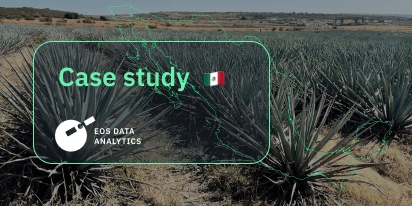
Digital Tools Improve Soil Health And Yields In Mexico
EOSDA and ITTA supported a Guanajuato farm with contour-line planning, monitoring tools, and practical guidance to reduce soil erosion and improve yields in the long run.

Analyze 2025 & Plan Your Best Year Yet: LandViewer Christmas Offer
It’s the most wonderful time of the year! The Christmas holidays are here, and so is your chance to analyze 2025 and plan a prosperous 2026 with more affordable Pro plans in LandViewer.

EOSDA Models Climate Change Impact On Sugarcane Yields
EOSDA modeled future temperature, rainfall, and other climate impacts on Veracruz sugarcane. The results help growers plan long-term adaptation strategies, including timing, varieties, and irrigation.